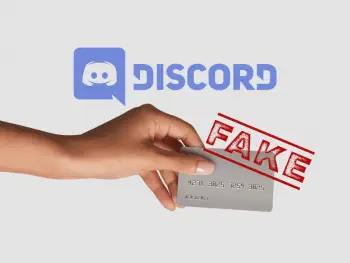You can manage your debt by transferring money from a credit card to another credit card that offers lower interest rates and pay your outstanding balance faster. This article will help you to understand the process.
So How To Transfer Money From Credit Card To Credit Card?
You can pay off outstanding debt on a credit card at lower interest rates by transferring money from another credit card that offers low promotional interest rates.
This practice, known as a credit card balance transfer, helps consolidate and pay off debt faster.
So, if you’d like to learn more about credit card balance transfers, this article will tell you everything you need to know to consolidate your debt and pay it off faster.

Credit Card Balance Transfer Explained
If you want to pay off one credit card with outstanding debt at a lower interest rate, a credit card balance transfer is a great way to pay off your debt faster.
Some issuers offer low promotional interest rates for a limited period of 6-18 months.
Let’s do the math on the difference in repayments on credit card debt of $10,000 that accumulates interest at a rate of 20% per annum and payments on a credit card that charges no interest.
To settle that debt in two years on that existing card, you must make a $500 monthly payment for the money currently owed.
The interest you would be paying in addition to these payments would carry over into $2,268 in total – a monthly repayment of $94.50. In total, you’d be paying $594.50 per month.
If you can find a card issuer offering a promotional interest rate of 0% for two years, you’d save $94.50 every month, or $2,268 in total.
However, it is less likely that you’ll find a deal that can save you that much money. Most promotional grace periods will only last 6-18 months, and the interest rate will likely be between 3% and 5%.
You’d also need to factor in the transaction fees on a $10,000 payment into your existing credit card from your new credit card.
However, you must also remain diligent with your payments, avoid missing your monthly minimum payment due, and adhere to all terms and conditions. You must read the fine print!
Suppose you fail to make a payment even one time.
In that case, you will be breaching the terms and conditions of your credit card agreement. The card issuer will have a provision allowing them to end the low promotional interest, which could result in you owing more money on your new credit card.
If you plan on conducting a credit card balance transfer, you must be 100% committed to making your monthly payments to take advantage of the lower interest rates.
Important Considerations For Credit Card Balance Transfers
Conducting a balance transfer from a new credit card to your old one is relatively easy.
However, you need to research and compare the different repayments, considering interest rates and transaction fees.
Look through the agreement the card issuer offers and pay special attention to the terms.
- How long does the “grace period” on the promotional offer last?
- What transaction fee will I pay on the credit card balance transfer?
- How much lower is the repayment interest compared to my current credit card?
- What is the minimum monthly repayment?
- How will non-payments affect the terms of the agreement?
So, start by researching different credit card offerings from different card issuers.
Even if the deal they’re offering is better than your existing card’s interest repayments, keep looking for more deals at different institutions and find out which card issuer offers the best deal.
Every dollar counts; even a 1% difference in interest rates can add up to a lot. And prepare for the worst.
Even if you’re certain that you’ll be consistent with payments, ensure you aren’t paying exorbitant interest rates (some agreements can go as high as 70%) if you miss a payment.
Accidents happen, and always expect you to come across an unexpected bill.
When you’ve found the best deal, you can apply for your new credit card with the issuer. They will require a KYC and check your credit record to consider your application.
Once you’ve signed on the dotted line, get them to help you transfer the money online, in person, or via telephone.
Once you’ve settled the debt on your old credit card, you should approach the card issuer and close your account.
Then, you can start repaying the outstanding debt on your new credit card.
Is A Personal Loan A Better Alternative?
While transferring money to pay off your credit card from a new credit card can be advantageous, some people may find a personal loan a better alternative.
Personal loans will likely offer a lower and fixed interest rate than you’re paying on your credit card, and they won’t have a grace period.
However, if you take out a personal loan, you’d have to use an asset as collateral to secure the loan.
If you don’t have any assets like a house or a car that can be used as collateral, this won’t be an option unless you can find a co-signer who trusts you and is willing to put their assets on the line.
And, if you have assets of your own, you’d have to be willing to take on the risk. Therefore, the benefit of conducting a credit card balance transfer is that you can apply for one without collateral.
Conclusion
You can save a lot of money by transferring money between credit cards if you take advantage of low promotional interest rates or temporarily interest-free periods.
But you can find yourself paying even more than you owed on your old card if you aren’t consistent with repayments.
A personal loan is a potential alternative, which will require putting up collateral. Nonetheless, repaying your debts can be easy with these simple strategies, and you will finally be able to take the next step toward financial freedom.




